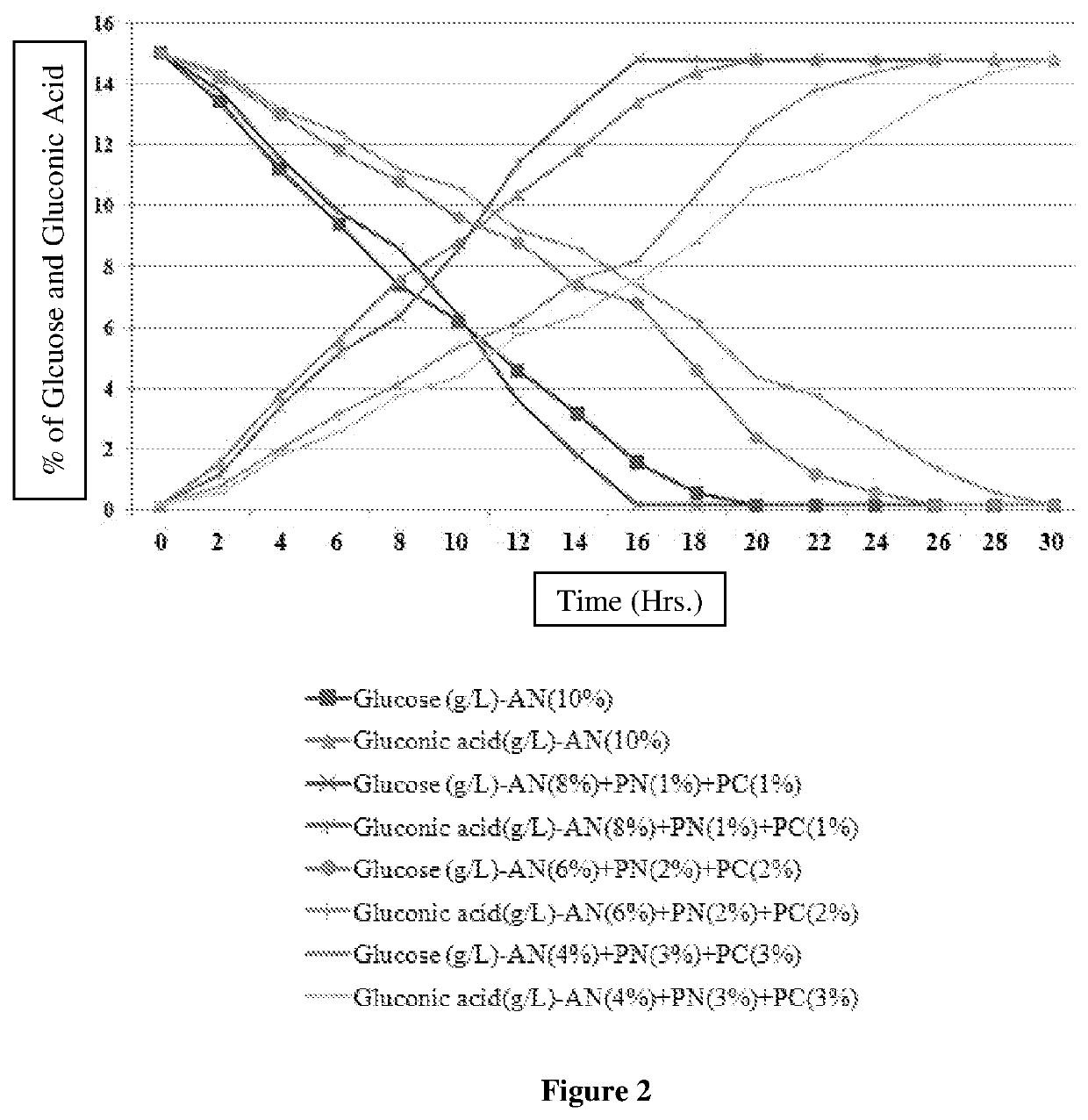Production of natural organic gluconates
a technology of organic gluconate and which is applied in the field of natural organic gluconic acid, can solve the problems of inability to produce gluconic acid in continuous fermentation by i>a. niger/i>, environmental toxicity and high cost, and increase the amount of gluconic acid, so as to improve the quality of the final product, reduce the time of production, and increase the yield of gluconate salts
- Summary
- Abstract
- Description
- Claims
- Application Information
AI Technical Summary
Benefits of technology
Problems solved by technology
Method used
Image
Examples
example 1
Upstream Process and Parameters:
[0023]The non-edible grade organic maize or wheat grains were powdered in a pulverizer. The hydrolyzing reactor was cleaned properly and 100 L of demineralized water was filled and mixed with 20-22 Kg of flour. The pH of the slurry was adjusted to 6.5±0.1 and temperature was maintained at 80° C. α-amylase of 0.5% of raw material flour was added to the tank and incubated for 1 h.30 min, the further enzyme was inactivated by raising temperature to 100±5° C. for 30 min. In the second step, the reactor was cleaned and above slurry was maintained at 60° C. at the pH 4.5±0.1. Glucosidase enzyme of 0.5% of raw material flour was added to the slurry and incubated for 5 h to complete the hydrolysis process. Once the hydrolysis was finished temperature was raised to 90° C. for 30 min to inactivate the enzyme. The final hydrolysate was passed through the leaf filtrate assembly and the monosaccharides solution was collected. The concentration of produced monosacc...
example 2
(a) In-Process Monitoring of Microbial Growth
[0029]Microbial growth during fermentation was measured in terms of fungal biomass. The fungal biomass was filtered through the Whatman No-1 filter paper and dried at 60° C. till constant weight was attained. The dry weight of fungal biomass was noted and gluconic acid yield was analyzed in the in-process and finished product samples by High-Performance Liquid Chromatography (HPLC) as explained in gluconic acid estimation.
(b) Downstream Processing and Product Recovery
[0030]The upstream process of maintaining the pH was used by 25-50% Ca(OH)2 / CaCO3 slurry as a neutralizer and it was removed by using sulfuric acid treatment@3-4% to the 14-16% of gluconate broth to obtain the pure gluconic acid.
[0031]The upstream process of fermentation was neutralized with the mineral salt to maintain pH was performed through dosing with pre-sterilized 25-50% Ca(OH)2 / CaCO3 slurry for calcium gluconate or 25-50% of Na2CO3 slurry for sodium gluconate or 25-50...
PUM
 Login to View More
Login to View More Abstract
Description
Claims
Application Information
 Login to View More
Login to View More - R&D
- Intellectual Property
- Life Sciences
- Materials
- Tech Scout
- Unparalleled Data Quality
- Higher Quality Content
- 60% Fewer Hallucinations
Browse by: Latest US Patents, China's latest patents, Technical Efficacy Thesaurus, Application Domain, Technology Topic, Popular Technical Reports.
© 2025 PatSnap. All rights reserved.Legal|Privacy policy|Modern Slavery Act Transparency Statement|Sitemap|About US| Contact US: help@patsnap.com


